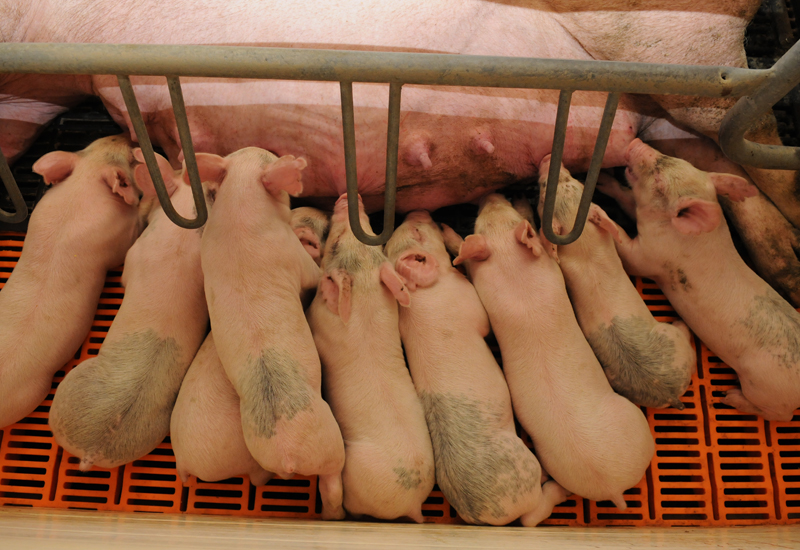For producers, adjusting ratios of digestible lysine to crude protein can improve growth rate
Kansas State University swine nutritionist Jason Woodworth says 70% of the costs in swine production relate to feed – a figure that can be reduced by substituting conventional crude protein sources like soybean meal with synthetic amino acids.
While this practice cheapens rations, it creates imbalances in amino acid to crude protein ratios, which caused Woodworth and other researchers at K-State to investigate how to economically formulate swine diets while keeping pig efficiency and growth on track.
Their work will be presented during the annual K-State Swine Day, scheduled for Nov. 21 at the university’s alumni center. Registration, which is available online, costs $25 and is due by Nov. 13.
“When adding target amino acids and removing some of the crude protein that comes with the soybean meal, we can get into deficiencies of other non-essential amino acids or some of the other active components that soybean meal brings to the diets,” he said.
In turn, K-State master’s student Jessica Smallfield completed multiple feeding trials looking at the effects of standardized ileal digestible lysine to crude protein ratio on the growth performance of young pigs using different feeding strategies to answer this nutrition query.
“In one instance, we composed diets to 1.15% and 1.30% SID lysine and found that pigs performed better at the higher percentage,” Smallfield said.
Smallfield then assembled numerous diets using soybean meal and distiller’s dried grains with similar SID lysine to crude protein ratios as the previous study to determine which source had the more sizable impact on growth.
“We found that pigs fed the diets with DDGs did not perform as well,” she said. “The findings from the first two studies contributed to a third trial where we added different non-protein nitrogen sources to the diets.”
“Our team wanted to determine how to bring back feed efficiency and performance by supplementing nitrogen, which becomes deficient as you remove things like soybean meal and lower crude protein levels,” she added.
Smallfield said all three trials had similar findings in determining the correct digestible lysine to crude protein ratio to feed.
“In diets with ratios above 6.5, nitrogen became the limiting growth factor,” she said. “Keeping them below 6.5 with different protein or non-protein nitrogen sources will help pigs recover lost performance.”
Beyond performance and efficiency, researchers also evaluated gut health.
“Those pigs fed the correct ratios had hindguts that were in better condition and produced less diarrhea,” Smallfield said. “Getting this ratio right can lead to better waste management, less slurry production and healthier pigs that grow more efficiently with less nitrogen excretion.”
Woodworth added: “Less nitrogen excretion is better for the environment and more sustainable at the end of the day.”
PHOTO: K-State swine nutritionist Jason Woodworth says more than 10,000 pigs from commercial swine units in Minnesota and Ohio were used in recent research trials, noting that industry partners are integral to research happening at the university. (K-State Research and Extension)



